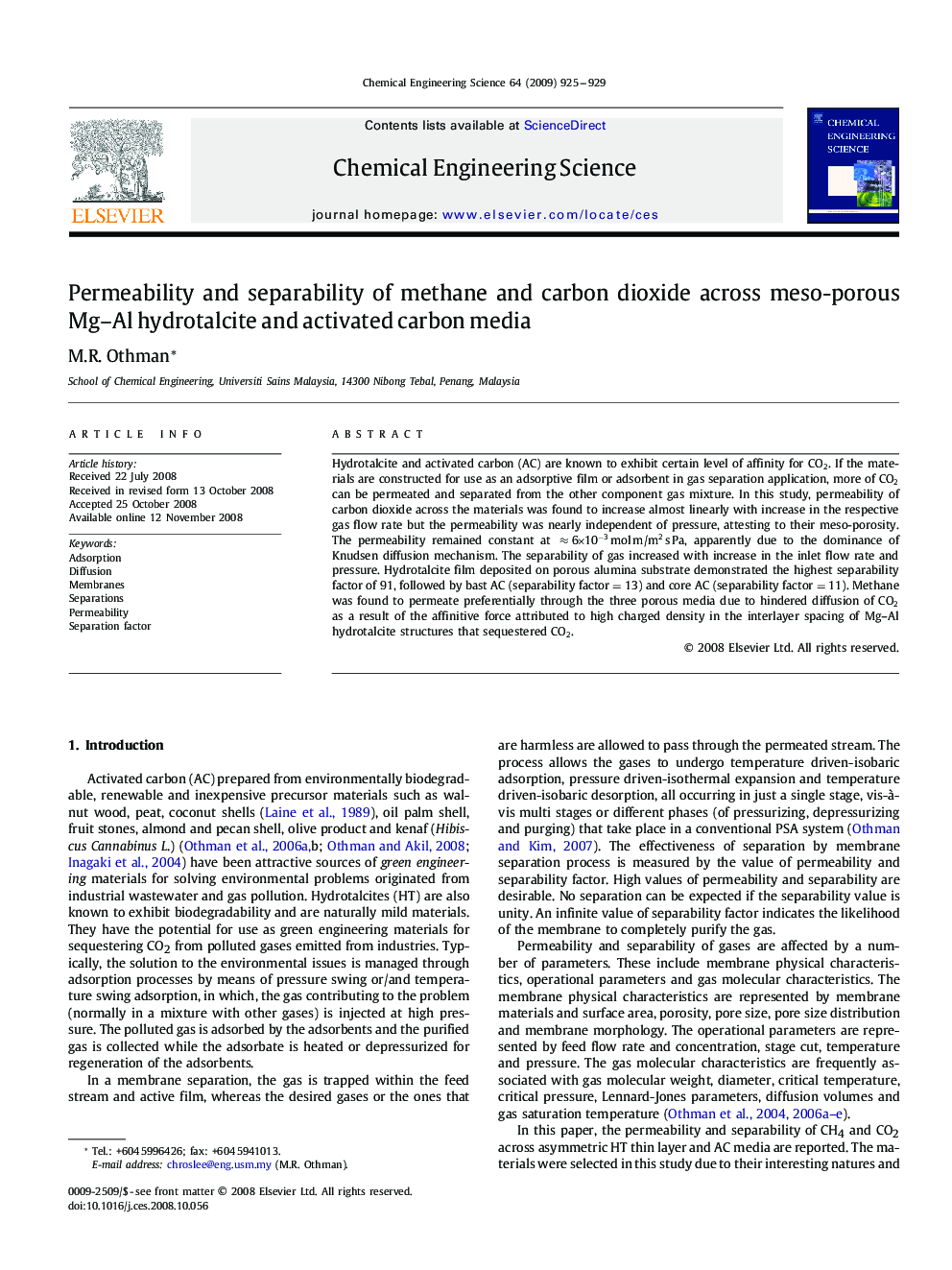| Article ID | Journal | Published Year | Pages | File Type |
|---|---|---|---|---|
| 157637 | Chemical Engineering Science | 2009 | 5 Pages |
Hydrotalcite and activated carbon (AC) are known to exhibit certain level of affinity for CO2. If the materials are constructed for use as an adsorptive film or adsorbent in gas separation application, more of CO2 can be permeated and separated from the other component gas mixture. In this study, permeability of carbon dioxide across the materials was found to increase almost linearly with increase in the respective gas flow rate but the permeability was nearly independent of pressure, attesting to their meso-porosity. The permeability remained constant at ≈6×10−3 mol m/m2 s Pa, apparently due to the dominance of Knudsen diffusion mechanism. The separability of gas increased with increase in the inlet flow rate and pressure. Hydrotalcite film deposited on porous alumina substrate demonstrated the highest separability factor of 91, followed by bast AC (separability factor=13) and core AC (separability factor=11). Methane was found to permeate preferentially through the three porous media due to hindered diffusion of CO2 as a result of the affinitive force attributed to high charged density in the interlayer spacing of Mg–Al hydrotalcite structures that sequestered CO2.
